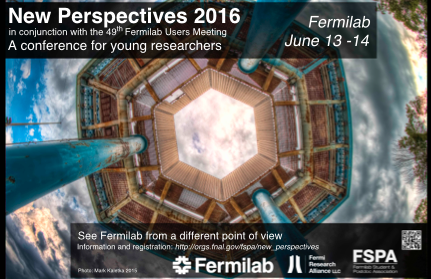Conveners
Session 5: MINERvA and SeaQuest
- Sam Zeller (FNAL)
Ben Messerly
(University of Pittsburgh)
14/06/2016, 09:00
The MINERvA experiment, operating since 2009 in the NuMI beamline, is a precision neutrino-nucleus scattering experiment. It aims to measure few-GeV neutrino interactions, both in support of the new era of neutrino oscillation experiments and as a weak probe of the nuclear medium. MINERvA has a fine-grained plastic scintillator detector that identifies the byproducts of neutrino and...
Marianette Wospakrik
(University of Florida)
14/06/2016, 09:15
MINERvA is a dedicated neutrino scattering experiment that employs the high intensity Fermilab NuMI neutrino beam to measure neutrino interaction cross sections on multiple targets to high precision. This talk will concentrate on the methods used to measure neutrino-nucleus charged-current deep inelastic scattering (DIS), which is an excellent probe to study nuclear and hadronic structure. The...
Mr
Noah Steinberg
(University of Florida)
14/06/2016, 09:30
Using the MINERvA detector exposed to the NuMI wide band neutrino beam we have isolated a sample of neutrino-helium events using a cryogenic liquid helium target. We present an effort to measure the first ever differential cross sections $\frac{d\sigma}{dE_\mu}$ and $\frac{d\sigma}{d\theta_\mu}$ on liquid helium.
Ben Messerly
(University of Pittsburgh)
14/06/2016, 09:45
The new class of long baseline neutrino oscillation experiments (NOvA, DUNE) use nuclear targets, and thus the success of their precision programs rely on thorough knowledge of neutrino-nucleus interactions. Pion production is the dominant reaction channel at the energies of these experiments, but nuclear final state interactions (FSIs) for pions are still not well understood. Recent charged...
Mr
Arun Tadepalli
(Rutgers University)
14/06/2016, 10:00
SeaQuest E906 is an experiment aimed at studying the anti-quark distributions in the nucleon and nuclei. The experiment uses a 120 GeV proton beam extracted from the Main Injector at Fermilab to collide with various liquid and cryogenic targets to study a variety of physics topics. It takes advantage of the Drell-Yan process to probe the nucleon sea. In the Drell-Yan process, a quark from one...
Mr
Bryan Ramson
(University of Michigan)
14/06/2016, 10:15
The Lam-Tung relation, a perturbative QCD, ``Callan-Gross-like'', correlation of the azimuthal and polar angles of leptonic products relative to the initial hadronic plane in multiple frames, defines a standard component of any analysis using Drell-Yan as a nucleon probe. In at least three experiments involving Drell-Yan between various species of pions and nuclei at CERN and Fermilab, the...
